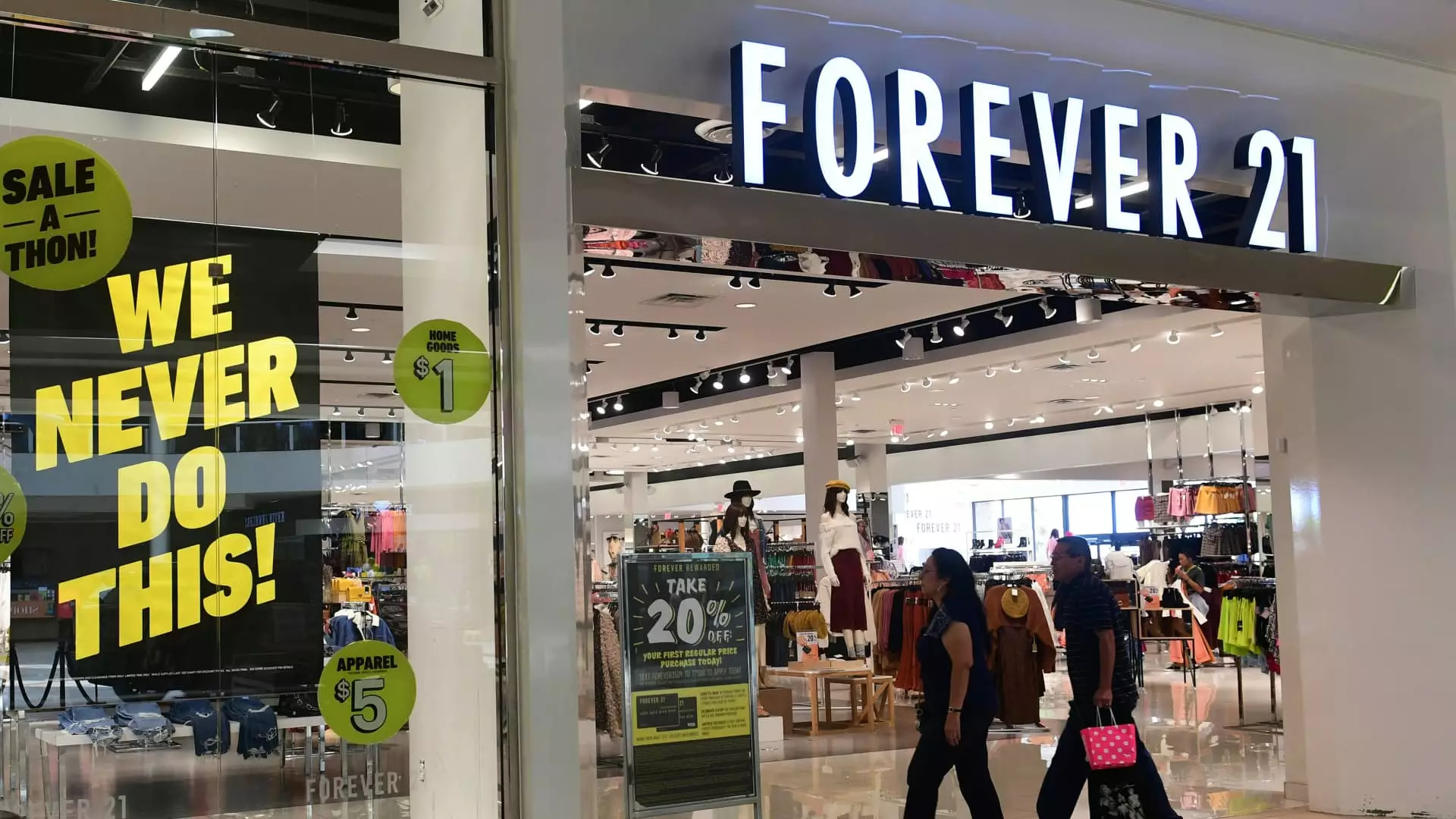In the relentless whirlwind of fast fashion, few brands have experienced the meteoric rise and fall quite like Forever 21. Once a beacon of youthful style and affordability, the retailer now grapples with the serious threat of extinction. Recent reports have surfaced indicating that the brand is in discussions with liquidators while simultaneously searching for potential buyers. The urgency of these discussions, stemming from its heightened financial difficulties, paints a stark picture of a company at a critical crossroads. This situation isn’t merely indicative of Forever 21’s plight; it highlights broader challenges currently plaguing the fast fashion industry.
Forever 21’s recent hardships are alarming, coming on the heels of its initial Chapter 11 bankruptcy filing in 2019. A consortium, including Authentic Brands Group, Simon Property Group, and Brookfield Property Partners, acquired the retailer after its first bankruptcy. Although this bailout was meant to stabilize the brand, recent developments suggest that the company’s struggles have only deepened, raising the specter of a second bankruptcy filing. Reports indicate that the brand has been soliciting substantial rent reductions from landlords, hinting at its struggles to maintain profitability while grappling with significant costs associated with physical storefronts.
The potential for a second bankruptcy raises essential questions: what lessons has Forever 21 failed to learn from its previous experience, and how does it plan to navigate the evolving landscape of fashion retail? As the brand considers liquidation options, the stakes are high—not just for its operations but for the employees whose livelihoods depend on its survival.
The Impact of Competition and Changing Consumer Preferences
One of the most formidable challenges confronting Forever 21 is its inability to match the agility and technological prowess of online competitors like Shein and Temu. These e-commerce titans have leveraged advanced technologies, including artificial intelligence, to not only streamline their operations but also to stay ahead of ever-changing consumer trends. In stark contrast, Forever 21 has struggled to adapt, losing its once-coveted status among trend-conscious shoppers. Once recognized as a fast-fashion leader, it now finds itself overshadowed by these nimble competitors that thrive on speed and innovation.
Furthermore, the financial strain is compounded by external factors such as rising tariffs and an overall shift in shopping behavior, particularly among younger consumers who are increasingly turning to online platforms. This shift has led to a diminishing footprint for traditional retailers, making survival difficult in an environment defined by rapid change and fierce competition.
Adding to the complexity of Forever 21’s situation is its partnership with Authentic Brands Group—a collaboration fraught with ambiguity. While Authentic Brands is known for reviving struggling retail brands, its role with Forever 21 has become a subject of speculation. With the brand’s intellectual property already under their ownership, the options for potential suitors become considerably limited. Observers have raised concerns about whether Authentic Brands itself could absorb Forever 21’s assets, but the potential for this scenario remains murky.
The intricate dynamics of brand management underscore a significant trend within the retail space: the increasing consolidation of intellectual property and the challenges that arise when brands find themselves tethered to multiple ventures. As companies like Authentic navigate these shifting waters, the outlook for brands like Forever 21 remains uncertain.
The Future: What Lies Ahead for Forever 21?
As Forever 21 stands on the precipice of potential liquidation, it faces a range of possibilities that could define its future. The discussions with liquidators provide an escape route for creditors, but they also signal a resignation to the fact that finding a suitable buyer may be an uphill battle. The brand’s reverting fortunes spotlight an industry in turmoil, where fast fashion giants must adapt or perish in a rapidly evolving retail climate.
As analysts predict the possible outcomes, it’s clear that any revival strategy must be dramatically different from past approaches. The lesson here is that the traditional retail model, especially one reliant on physical stores, may no longer suffice in an era dominated by rapid e-commerce evolution and shifting consumer preferences. For Forever 21, the time has come to confront the harsh realities of its operational model and to rethink its approach to the rapidly changing world of fashion retail.
Forever 21’s journey serves as a cautionary tale for the retail sector: adaptation and innovation are no longer optional but essential for survival in today’s fast-paced market. As the company contemplates its next steps, the fashion world watches and waits, wondering if this iconic brand can reclaim its place—or if it will bow out of the runway entirely.

